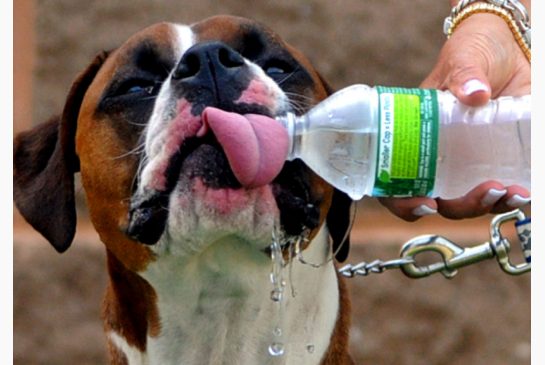Incentivize plastic bottle returns

Re: Why Americans keep hitting the bottle (of water)
Letter to the Toronto Star Sep 8 2015
What bothers me most about this article is that most bottles end up as either litter or in the garbage. In more than 16 countries around the world and in some Canadian provinces, there is deposit/return legislation on drink containers that places the responsibility for recycling on the producers and users and offers an incentive for others to gather them for pocket money.
If the Ontario Ministry of the Environment is serious about bringing in individual producer responsibility, it should start with deposit/return legislation immediately.
Katy Austin, Elmvale
Why Americans keep hitting the bottle (of water)
Water is about to replace soda pop as the most popular packaged drink, even though it pours from taps at a fraction of the price
By: Roberto A. Ferdman The Washington Post, Sep 05 2015
Once an occasional indulgence, bottled water is quickly becoming America’s drink of choice.
The average person in the United States now consumes more than 132 litres of bottled water per year, according to Beverage Marketing Corp. That’s about 270 bottles, and more than twice as many as people drank 15 years ago. By 2017, the average American is expected to drink almost 300 bottles annually.
For perspective, consider that over the next two years, bottled water is expected to eclipse pop as the most consumed packaged drink in the United States.
“It’s not a question of whether, but when, it will happen. We see it happening in about two years,” said Gary Hemphill, managing director of research at Beverage Marketing.
The growing popularity of bottled water, especially in a rich country, is a touchy subject. Sustainable-water activists bemoan the billions of bottles used each year as an example of American excess.
But bottled-water makers tout their product as a healthy alternative to sugary drinks and say it’s a safer option for those who live in areas where clean tap water is unavailable. And their message seems to be getting across, because Americans love the stuff.
A few underlying trends stand out in the surge of bottled-water sales:
The first is the ascent of health consciousness, which has helped bottled water as much as it has hurt pop. “Consumers see it as a healthy beverage alternative,” Hemphill said.
The second is the ubiquity of options. “If you grew up in the ’70s and you wanted something cold and refreshing to drink, you would have a carbonated soft drink because there really weren’t very many other options,” Hemphill said. “But now there are tons, and bottled water is kind of at the centre.”
Bottled water has also been marketed down Americans’ throats. In order to distinguish a product that is essentially indistinguishable, the industry has bombarded consumers with a plethora of clever campaigns, which depict exotic springs, far-off mountains and fresh, untapped streams of natural water.
But, perhaps more than anything else, bottled water is wildly convenient. It’s sold at supermarkets, cafés and, obviously, convenience stores.
Convenient, but environmentally questionable. All those empty water bottles aren’t disappearing into thin air.
“The bottled-water industry says correctly, but misleadingly, that the plastic the water comes in is recyclable,” said Peter Gleick, president of the Pacific Institute, and author of several books about bottled water. “It’s misleading because recyclable is not the same thing as recycled.”
By Gleick’s estimate, only about a third of all bottles of water consumed in the United States are recycled, meaning that about two-thirds end up in the garbage.
“There is no comparison with the environmental footprint of bottled water,” he added. “Of course, the plastic footprint is the same as it is with other drinks which come in bottles. But that argument is disingenuous, because for bottled water the alternative isn’t pop, it’s tap water. And the environmental footprint of bottled water vastly exceeds the environmental footprint of cheap, high-quality tap water. It’s not even close.”
As of 2006, it took 3 liters of water to produce 1 liter of bottled water, according to the Pacific Institute. In other words, before even including the energy required to produce the actual bottles — which is significant — bottled water was already three times as inefficient as its unpackaged alternative.
Gleick says it’s important not to discount the existence of an irrational fear people have about what comes out of their tap. They don’t know how good the water is. Tap water faces far more rigorous bacteria testing in cities than any water-bottling company in the country faces. And a quarter of all bottled water comes from a tap anyway.
“It is remarkable to me,” said Gleick, “that sales of bottled water are continuing to rise in a country where we have cheap, incredibly safe, incredibly reliable tap water that’s available to basically everyone.”









Leave a Reply